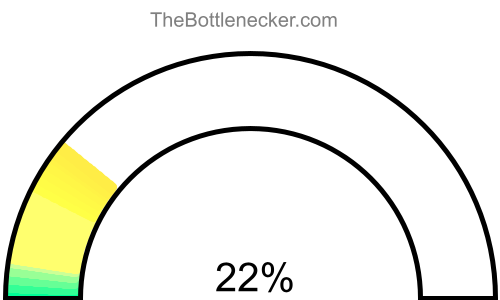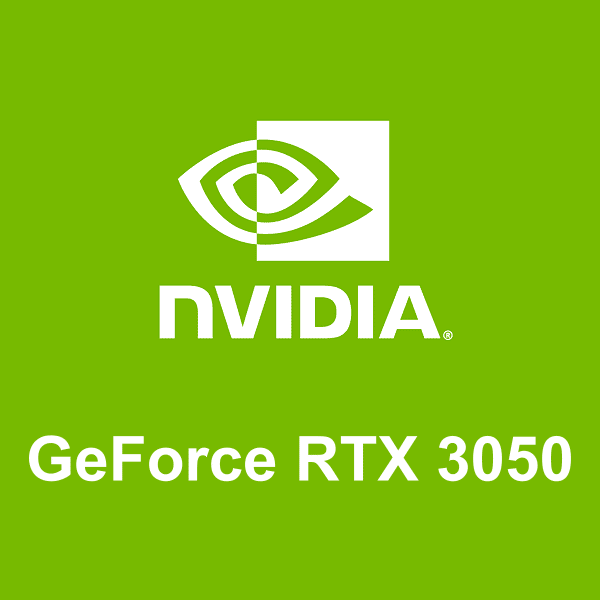Graphic Card Intense Tasks bottleneck calculator
Intel Core i7-3615QE and NVIDIA GeForce RTX 3050
Graphic Card Intense Tasks
6400 × 4096
1 monitor
1. Select purpose
Currently selected:

Graphic Card Intense Tasks
2. Select processor
Currently selected:
Intel Core i7-3615QE
3. Select graphic card
Currently selected:
NVIDIA GeForce RTX 3050
4. Select resolution
Currently selected:
6400 × 4096 resolution
(1 monitor)
Calculation result
Bottleneck percentage
In a system configuration featuring the Intel Core i7-3615QE and NVIDIA GeForce RTX 3050, the NVIDIA GeForce RTX 3050 could potentially act as a bottleneck to the Intel Core i7-3615QE performance in the Graphic Card Intense Tasks with 6400 × 4096 and 1 monitor. While the Intel Core i7-3615QE is well-equipped to manage strenuous computational tasks, the NVIDIA GeForce RTX 3050 limited graphical prowess may compromise the overall system efficiency. This disparity could lead to decreased performance and less effective utilization of system resources. To rectify this imbalance, an upgrade to a more capable graphics card that complements the Intel Core i7-3615QE processing abilities is advisable.

With a screen resolution of 6400 × 4096 and 1 monitor, this configuration demonstrates a 21.6% graphics card bottleneck when performing Graphic Card Intense Tasks.
Processor and graphic card utilizations
In a computing setup featuring the Intel Core i7-3615QE and NVIDIA GeForce RTX 3050, under the context of Graphic Card Intense Tasks with a screen resolution of 6400 × 4096 and 1 monitor, the processor is expected to have an utilization rate of 59%, while the graphics card is projected to be utilized at 83.2%.
It's crucial to understand that these figures signify theoretical maximums based on typical CPU-to-GPU workload distribution ratios for certain tasks or gaming experiences. Achieving these high levels of utilization in real-world settings can be a challenging endeavor.

Playability
- Playable
- Frames per second
-
A game is considered "playable" if it can consistently run at 60 FPS on high settings. This ensures a smooth and visually appealing gaming experience free from lags or stutters.
Heatmap of bottleneck
During gameplay scenarios, your Intel Core i7-3615QE might not operate at its full potential due to the constraints imposed by the NVIDIA GeForce RTX 3050. In such cases, the NVIDIA GeForce RTX 3050 may struggle to swiftly process and relay data, resulting in underutilization of the Intel Core i7-3615QE. Therefore, the NVIDIA GeForce RTX 3050 will be operating at its maximum capacity, leaving the Intel Core i7-3615QE capabilities untapped.
In the hierarchy of bottlenecks, a graphics card bottleneck is often considered less severe than a processor bottleneck. When a graphics card bottleneck occurs, the NVIDIA GeForce RTX 3050 operates at its uppermost limits, thereby allowing you to extract the best performance possible from the card. This ensures that you benefit from the full scope of the NVIDIA GeForce RTX 3050 features.
One distinct advantage of not maxing out the Intel Core i7-3615QE is the enhanced ability to efficiently manage other background tasks. As the Intel Core i7-3615QE is not operating at full capacity while gaming, it can allocate computational resources to other ongoing activities like background processes or multitasking, without any performance trade-offs. This contributes to a smoother and more flexible overall system operation.
To gain a deeper understanding of these potential bottlenecks, consider referring to our heatmap. On the heatmap, the X-axis depicts the CPU Score, and the Y-axis signifies the GPU Score. This visualization can help identify the relationship between various CPUs and GPUs, giving you valuable insights into how to better balance your system.

By matching your Intel Core i7-3615QE CPU Score with the NVIDIA GeForce RTX 3050 GPU Score on the heatmap, you can more accurately assess how these components interact and pinpoint where bottlenecks may occur. Utilizing this heatmap analysis can guide you in making informed hardware decisions that lead to a more balanced and effective computing setup tailored to your specific needs.
Bottleneck solutions
Replace processor
If your graphic card is causing the bottleneck but you're considering replacing your processor, reconsider this approach. Unless your processor is already on the verge of becoming outdated, upgrading it might not offer a significant performance boost, particularly in graphics-heavy tasks.
- Intel Core i5-3380M Full details
- AMD A10-9630P Full details
- Intel Core i5-4308U Full details
- AMD Athlon Silver 3050e Full details
- AMD A12-9730P Full details
- Intel Core i5-4300M Full details
- Intel Core i7-3540M Full details
- AMD Athlon Silver 3050U Full details
- Intel Core i5-6200U Full details
- Intel Core i7-5650U Full details
- Intel Core i7-4558U Full details
- Intel Core i3-7130U Full details
- Intel Pentium Silver N5000 Full details
- Intel Core i5-4258U Full details
- Intel Core i5-4288U Full details
- Intel Core i3-6100U Full details
- Intel Core i7-3687U Full details
- Intel Core i5-7Y54 Full details
- AMD A12-9720P Full details
- Intel Core i5-3610ME Full details
- Intel Core i5-3320M Full details
- AMD PRO A12-9800B Full details
- Intel Core i5-3340M Full details
- Intel Core i7-4600U Full details
- AMD 3015e Full details
- Intel Core i3-7100U Full details
- Intel Core m3-7Y32 Full details
- Intel Core i5-5300U Full details
- AMD FX-7600P Full details
- Intel Core i3-6157U Full details
- Intel Core i5-8210Y Full details
- Intel Core i7-5500U Full details
- AMD RX-427BB Full details
- Intel Core i5-5257U Full details
- Intel Core i5-4200M Full details
- Intel Core i5-4278U Full details
- AMD FX-8800P Full details
- Intel Core i7-5550U Full details
- Intel Core i5-3360M Full details
- Intel Core m3-8100Y Full details
- Intel Core i7-3520M Full details
- Intel Core i5-4210M Full details
- Intel Core i7-3537U Full details
- Intel Core m5-6Y57 Full details
- AMD A10-9600P Full details
- AMD PRO A10-8730B Full details
- Intel Core i5-2540M Full details
- Intel Pentium 6405U Full details
- Intel Atom T5700 Full details
- Intel Core i7-3667U Full details

Impact of Changing Screen Resolution
Increasing the resolution in this scenario will only make the bottleneck worse, as the GPU will be under even more stress, leading to lower frame rates and reduced graphical quality. It won't significantly ease the load on the already underutilized processor.
Read moreReplace graphic cards
When the graphic card becomes a system bottleneck, upgrading it can provide a significant boost in performance. Opt for a card that better matches the capabilities of your processor to get a more balanced system. This will also enable you to run games and applications at higher settings, offering a vastly improved user experience.
- NVIDIA RTX 4000 Ada Generation Full details
- AMD Radeon RX 7900M Full details
- NVIDIA GeForce RTX 4070 Full details
- NVIDIA RTX 3500 Ada Generation Full details
- NVIDIA GeForce RTX 3080 Ti Full details
- NVIDIA GeForce RTX 3070 Ti Full details
- NVIDIA GeForce RTX 4060 Full details
- NVIDIA RTX A5500 Full details
- NVIDIA RTX A4500 Full details
- NVIDIA GeForce RTX 3080 Full details
- NVIDIA RTX 3000 Ada Generation Full details
- NVIDIA RTX A5000 Full details
- NVIDIA GeForce RTX 3070 Full details
- NVIDIA RTX 2000 Ada Generation Full details
- NVIDIA RTX A4000 Full details
- AMD Radeon RX 6800S Full details
- AMD Radeon RX 6850M XT Full details
- AMD Radeon RX 6700S Full details
- AMD Radeon RX 6650M Full details
- NVIDIA GeForce RTX 2080 Full details
- NVIDIA GeForce RTX 4050 Full details
- NVIDIA Quadro RTX 5000 Full details
- AMD Radeon RX 7600S Full details
- AMD Radeon RX 6700M Full details
- NVIDIA RTX A3000 Full details
- NVIDIA Quadro RTX 5000 (Max-Q Design) Full details
- AMD Radeon RX 6600M Full details
- NVIDIA GeForce RTX 2070 Super (Max-Q Design) Full details
- NVIDIA RTX 1000 Ada Generation Full details
- NVIDIA GeForce RTX 2080 Super (Max-Q Design) Full details
- NVIDIA GeForce RTX 3060 Full details
- NVIDIA GeForce RTX 2080 (Max-Q Design) Full details
- AMD Radeon RX 6800M Full details
- NVIDIA Quadro RTX 4000 (Max-Q Design) Full details
- NVIDIA Quadro RTX 4000 Full details
- NVIDIA GeForce RTX 2070 Full details
- NVIDIA Quadro P5200 Full details
- NVIDIA GeForce RTX 2070 (Max-Q Design) Full details
- Intel Arc A770M Full details
- NVIDIA GeForce RTX 2060 Full details
- NVIDIA GeForce GTX 1080 (Max-Q Design) Full details
- AMD Radeon RX 7600M XT Full details
- NVIDIA Quadro RTX 3000 Full details
- NVIDIA GeForce GTX 1070 Full details
- NVIDIA RTX A2000 Full details
- NVIDIA GeForce RTX 3050 Ti Full details
- NVIDIA GeForce GTX 1660 Ti Full details
- NVIDIA GeForce GTX 1070 (Max-Q Design) Full details
- NVIDIA RTX A1000 Full details
- NVIDIA GeForce RTX 2060 (Max-Q Design) Full details

Impact of Changing Screen Resolution
If your graphics card is bottlenecking the system, lowering the screen resolution will allow the card to handle data more efficiently, resulting in higher frames per second. However, it's worth noting that lower resolutions will require less data processing from the CPU, which could create a new bottleneck there.
Read moreBottleneck calculator types
Select purpose bottleneck calculator
Before selecting a bottleneck calculator, consider your primary computing tasks. For general activities like web browsing and office work, the calculator evaluates the balance between your CPU and GPU. If you focus on CPU-intensive tasks like video editing or 3D rendering, the tool will highlight processor performance. For GPU-centric tasks such as gaming or graphical rendering, it will assess the efficiency of your graphics card. Choose the appropriate calculator to accurately identify potential system bottlenecks for your specific use-case.
Select game bottleneck calculator
By selecting a game from the list, the calculator will analyze potential bottlenecks specifically tailored to that game's system requirements and graphical demands. This allows you to optimize your setup for a smoother, more responsive gaming experience. Choose the game that aligns with your interests to get the relevant bottleneck analysis.


































